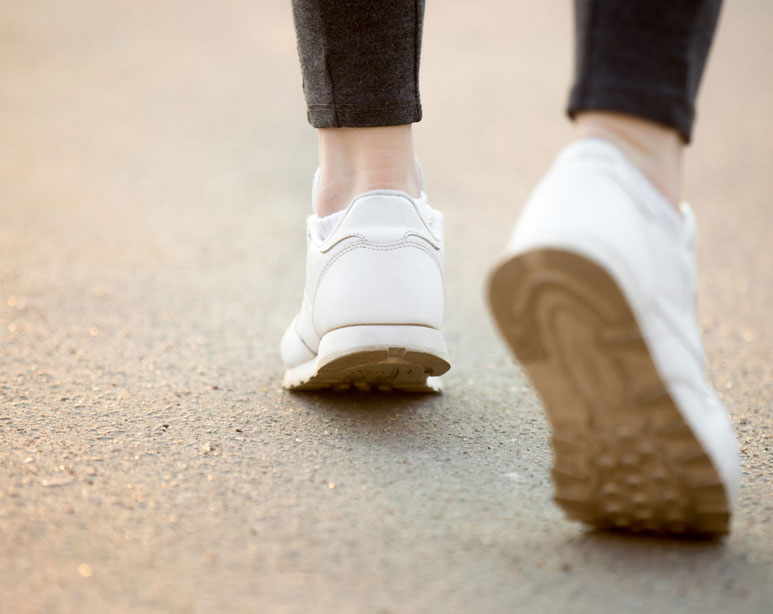This is how the treatment works
NEW FORM OF TREATMENT
Pronatos is a new form of treatment that corrects feet and restores their natural mobility effectively and measurably. We discovered this new treatment method with our invention, StretchPower, originally intended to stretch the calf muscles. After many years of testing, we have now started with treatments for problems associated with feet with collapsed arches and incorrect movement patterns.
– We are the first in the world with these treatments and now we are training more clinics in the country so that you can get help quickly and easily.
THIS IS HOW THE TREATMENT IS DONE.
- First, we go through the cause of the problem. We look at the foot posture.
- We do strength-and mobility tests of the feet.
- We diagnose your problem and do the tests that require it.
- Then we have a basis on how we should treat your feet.
The treatment is done with a device called StretchPower. Using a rod, we expose the lower leg to pressure so that the ankle bends, mobility is increased, and the error is corrected. Before treatment begins, we put it in the right position in StretchPower so that you get the desired effect on the treatment.
The treatment is completely painless and must not hurt. You control the treatment yourself and receive instructions at the same time.
Some clinics have advanced measuring equipment that measures the foot’s pressure and movement. With this, you can see changes in the foot’s biomechanics before and after treatment.
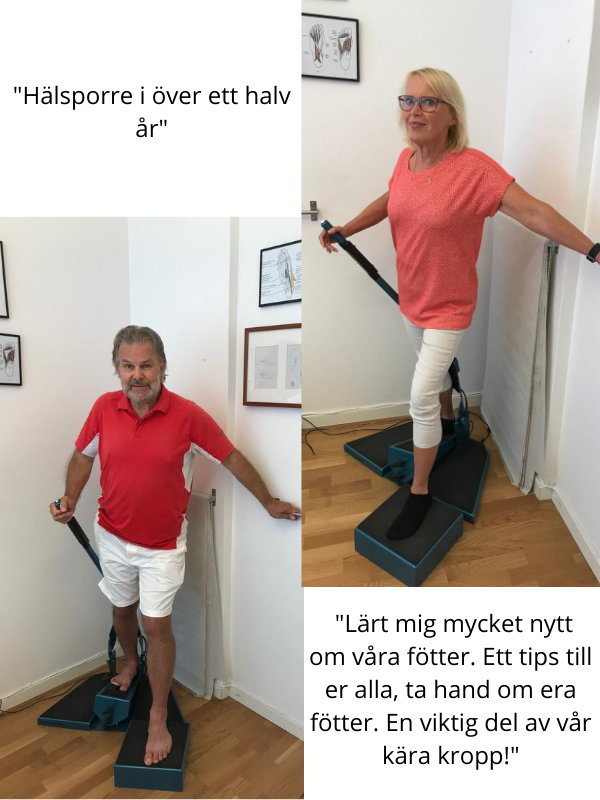
BEFORE THE TREATMENT
Every time you take a step, the foot’s arch should sink when the foot is in the middle of the body. It is the foot’s natural movement to adapt to the surface. Then the arc should come up at propulsion.
If this movement is disturbed and the foot arch is not coming up at the propulsion, the support is missing on the inside of the foot (arch of the foot), and incorrect movements (compensations) occur. When the support under the inside of the foot does not come up, the support disappears on the inside of the knee, and the compensations continue upward.
This causes the knee and lower leg to rotate inward, and this rotation continues up to the hip with a rotation of the femur as a result. With lower support under the inside of the foot, the leg becomes shorter. This causes the hip to rotate, and you get an increased sway. Then the back must compensate for the difference in leg length with compensatory scoliosis. This continues all the way up to the neck
TWO OWN TESTS OF YOUR FOOT.
The most common cause of foot problems is Functional Hallux Limitus. This means that the big toe does not come up when you walk over it, and the arch’s movement is disturbed.
This causes problems such as plantar fasciitis, heel spurs, Morton’s neuroma, Tibialis Posterior syndrome, Hallux valgus, Hallux rigidus, Metatarsalgia, Peroneustendinitis, and osteomyelitis. Swelling in the feet can also be a cause of functional Hallux Limitus.

TO TEST THE TOE FUNCTION
In the pictures, the right foot is tested. Sit with the right lower leg on the left knee. It is important to relax in the foot to be tested.
First, test the mobility of the toe by lifting the tip of the toe. It shows how much mobility there is in the joint itself (see picture on the left). The angle of the toe should be around 65 degrees for “normal” function. The angle is measured towards the first metatarsal bone (see inset).
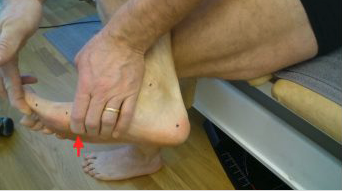
To test FHL
Grasp under the forefoot. Lift the foot so that it bends maximally upwards in the ankle. Do not push in the foot’s arch against the tendons that go to the heel (see the blue arrow, picture 1).
Then bend the big toe upwards. The toe should come up, as picture 3 shows. If this does not happen, it gets stuck in the joint, as picture 2 shows. This is a disorder of the joint that causes various ailments. The pressure under the forefoot and the big toe should be about the same pressure, and the big toe should always come up with ease.
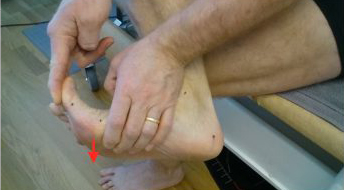
A normally functioning big toe after treatment
You feel that the big toe joint (forefoot) sinks with this movement simultaneously as the big toe bends without obstacles. This is the normal movement that should take place.
With Functional Hallux Limitus, you get changed biomechanics in the foot, and the arch of the foot does not come up at propulsion. The foot pronates instead of supine, the lower leg does not rotate outwards, and you lose the natural rotational effects in the upward movement pattern. This can cause discomfort in the feet, knees, hips, back, and neck.
TEST WITH KNEE BEND
Another cause of foot problems is that you are too stiff in the ankles. This is because you are stiff in the calf muscles or have disorders in the foot, knee, or hip joint. You can easily test this yourself, whether it works or not with this self-test.
You can look at yourself if you stand straight with your feet parallel forward. You should be able to squat with your heels on the floor without the feet rotating outwards or the ankles falling inwards. The knees should also not go together but should be kept straight over the feet.
You should be able to squat down without falling backward until your thighs are horizontal in that position (see the upper picture next to it).
The reason for getting stiff is a prolonged strain on the lower leg muscles. You walk and stand a whole life often without stretching the muscles of the lower leg. It is the calf that needs to be stretched and the muscles of the toes, which are located below the calf muscle. It is complicated to find and access to stretch these muscles yourself, even if you try hard.
Since the treatment gives an immediate effect, you usually know immediately if this form of treatment helps. The treatment usually works less well on congenital disabilities, arthrosis, and osteoarthritis in the feet and knees.
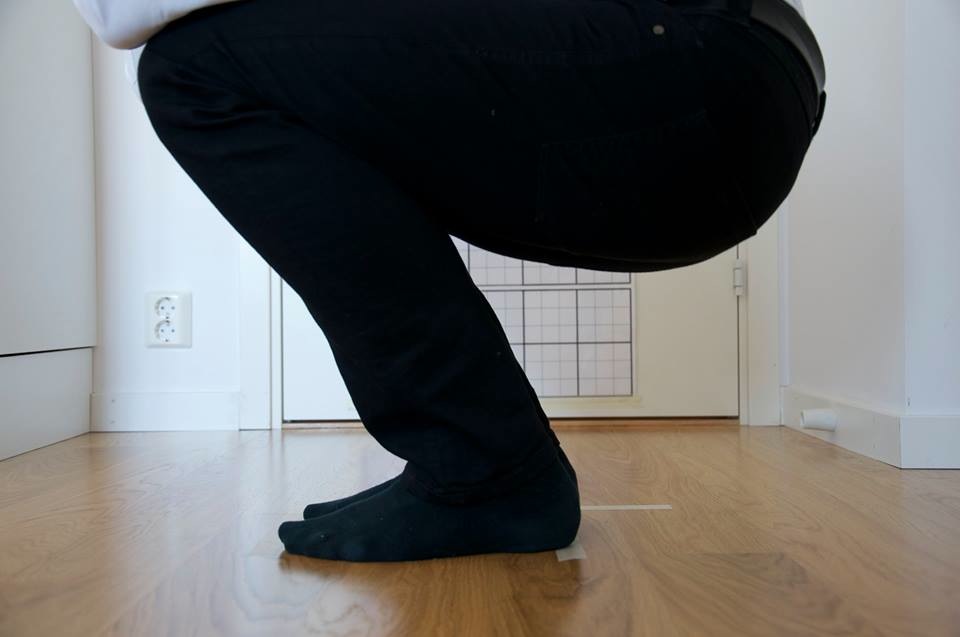
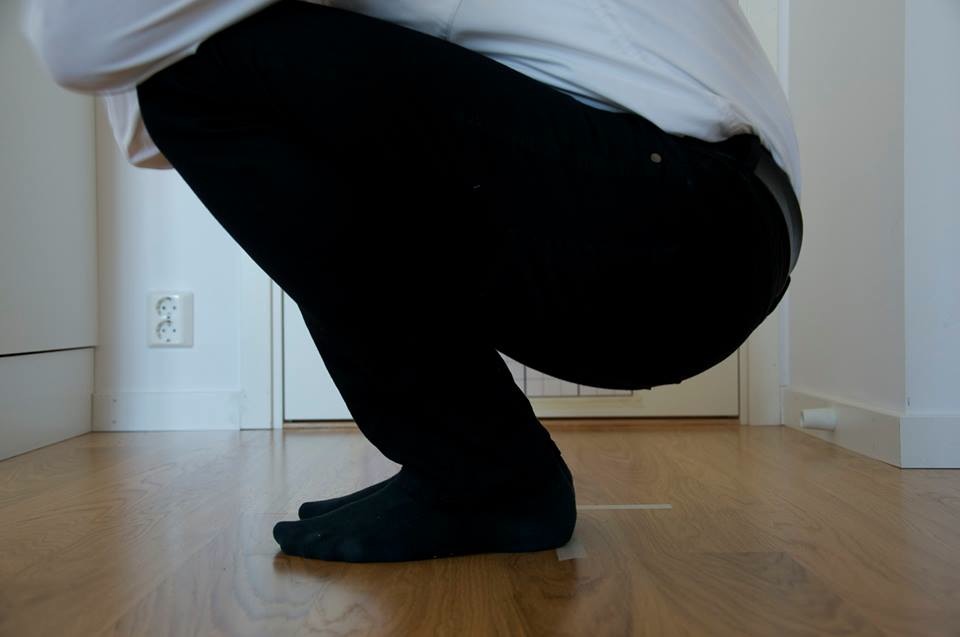
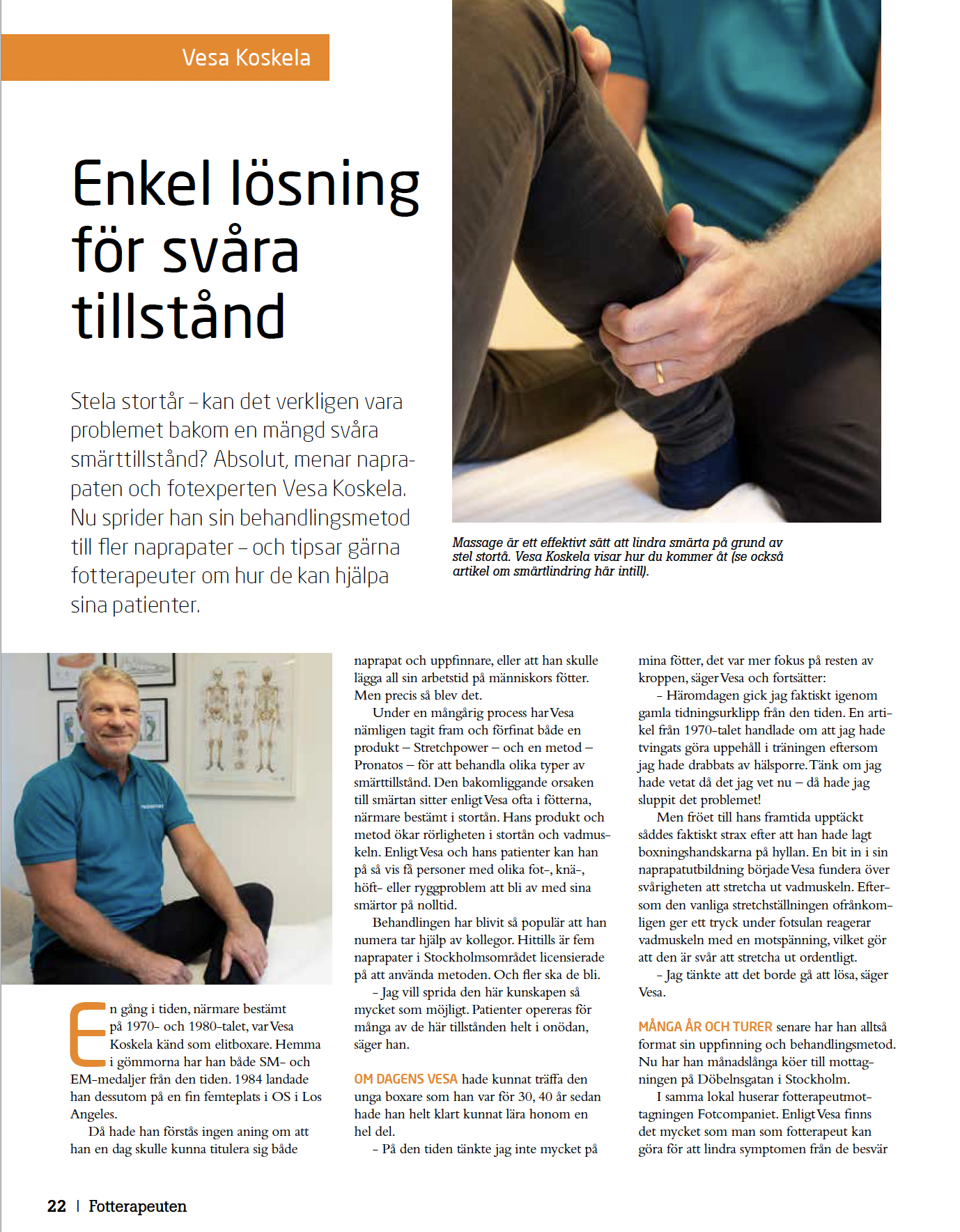
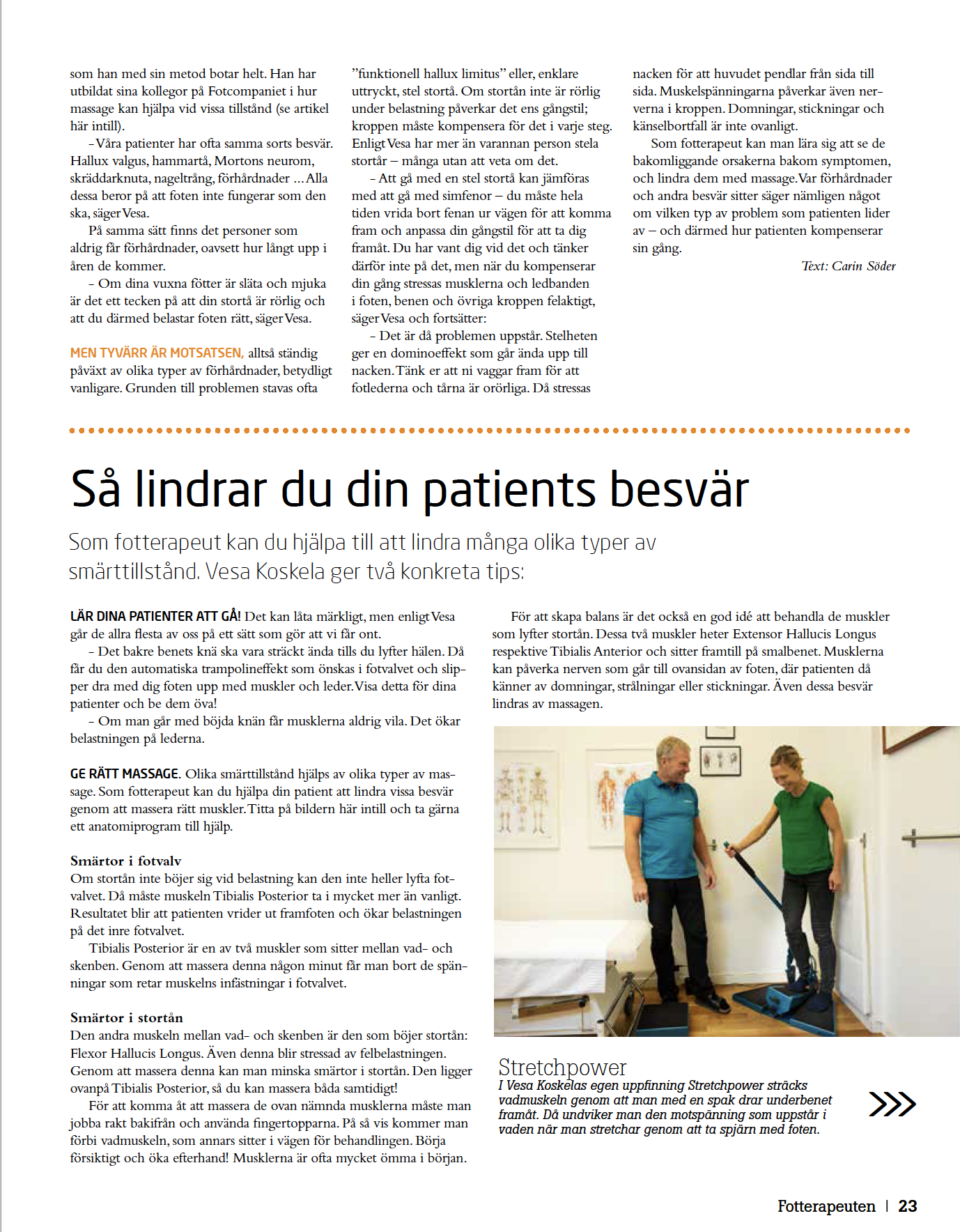
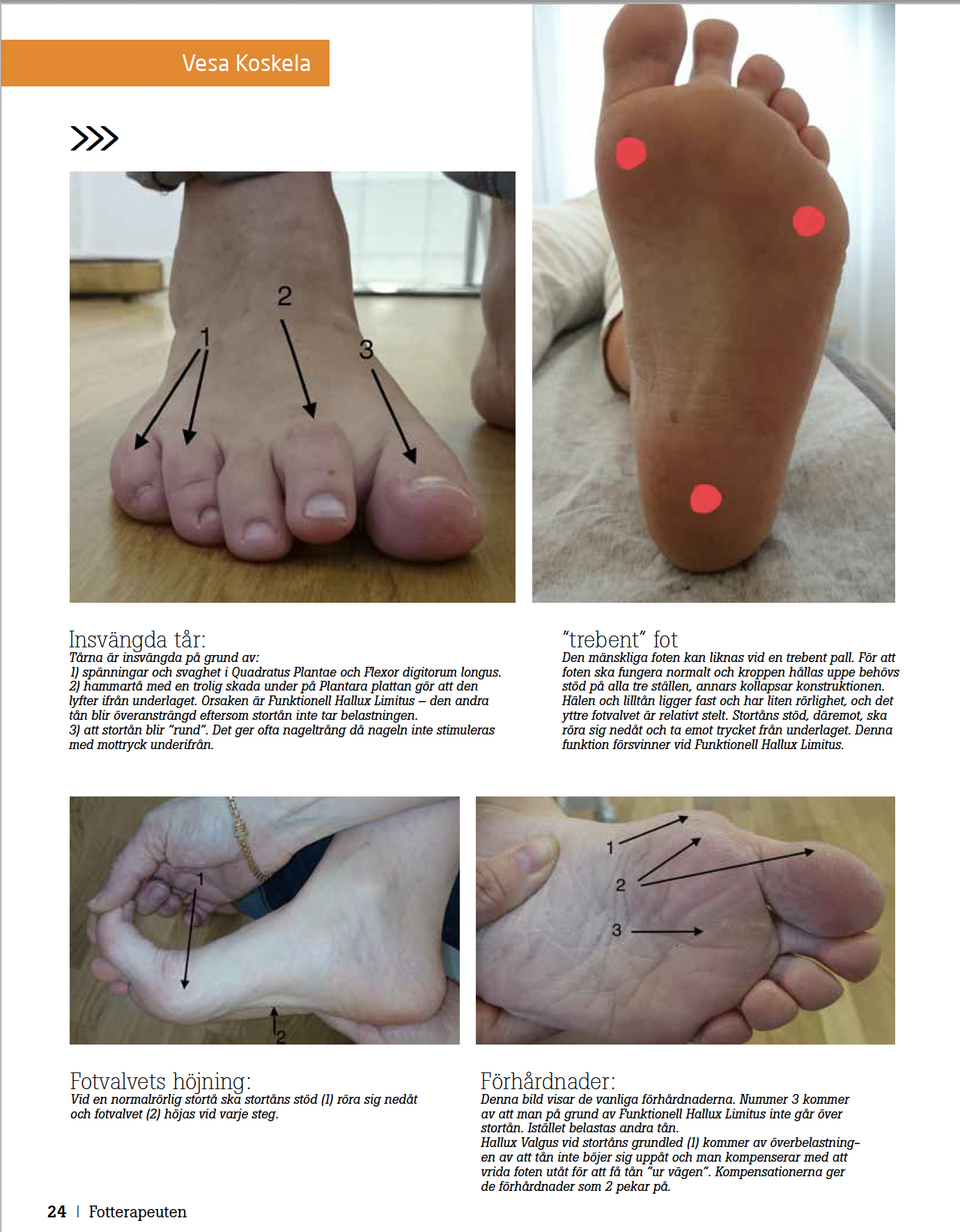
The article next to it is from Fotterapeuten, a magazine for Swedish Medical Podiatrists.
There we describe how incorrect foot function affects calluses and deformations of the foot. Click the button below to download the article.
TO THINK ABOUT AFTER TREATMENT
A correction of the feet affects upwards because the previous malfunction has affected the foot’s step and height. This creates a skew in height and a biomechanically incorrect movement in the body for each step you take. After treatment, this skew and biomechanically incorrect movement begin to return to normal. If the defect has caused problems in the hip, pelvis, and lumbar spine, this can temporarily cause altered pain if it does not correct itself with the treatment.
After treatment, the feet should be relieved as much as possible not to push back to the wrong position again. Walk as you have been instructed, but avoid long walks and carrying heavy loads for the next few days. You usually get a stronger muscle after a treatment when the defect in the foot releases, and muscles that have protected this relax and become stronger.
The treatment affects the muscles because they have not functioned normally. When the foot has not functioned properly, there is an imbalance between the muscles. This means that the muscles must find their way back to their old work pattern, and you should then slowly build up the muscle strength so that they regain all their strength before you load yourself to the maximum again. You often feel better in the feet and legs immediately after the treatment, but we urge you to load back to the same load you had before slowly. You may have shortened the walks due to your discomfort. Increase back slowly again so that the muscles recover.
If you have cast inserts in the shoes, you should not use them after the treatment. They will force the foot to the old position, and the effect of the treatment will not be, or you will get pain in the feet from the inserts.
